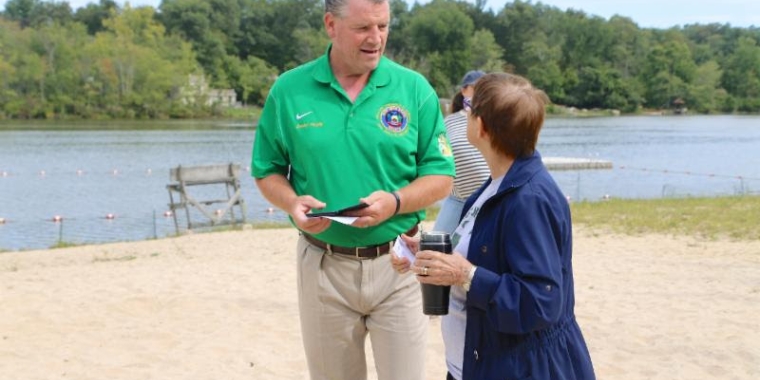
Senator Murphy, Latimer Announce $267,375 Project Management Grant to Stem Growth of Algal Blooms in Croton River
March 31, 2018

Albany, NY - Thanks to an environmental initiative designed to protect vulnerable bodies of water from the spread of harmful algal blooms, the Croton River will soon lose its unhealthy green tint. Senator Terrence Murphy is pleased to announce a State grant for $267,375 has been secured to hire Little Bear Environmental Consulting as project manager for The Croton-Hydrilla Control Project.
The Project will arrest the growth of Hydrilla verticillata (hydrilla) in the Croton River. Hydrilla grows and spreads rapidly and is one of the most difficult aquatic invasive plants to manage and eradicate in the United States. Infestations can have negative impacts on recreation, tourism, and fisheries, as can have a severe effect on aquatic ecosystems.
"Algal blooms are tiny organisms with a toxic punch," said Senator Murphy. "The blooms can literally choke the life out of a body of water. When masses of algae die and decompose, the decaying process can deplete oxygen in the water, causing the water to become so low in oxygen that it becomes a threat to aquatic life. Through a carefully monitored restoration plan, the Croton River can remain one of Westchester County's most cherished waterways."
Westchester County Executive George Latimer said, "One of the many great things about Westchester County is our expansive system of parks and wide range of plant species that adorn them. However, it is imperative that we preserve the indigenous plant structure. The infestation of hydrilla in the Croton River can impact fisheries and ecological communities - while threatening the Hudson River. We are grateful for the work done here by Senator Murphy in securing grant funds so we can ensure the environmental safety of our waterways."
Hydrilla was discovered in the Croton River in October 2013 and later found in Croton Bay during a 2014 survey in Cortlandt and Ossining. The survey also revealed that hydrilla is well established in the Croton River and the New Croton Reservoir. While Hydrilla remains in the Croton River and Bay, it threatens habitats in the Hudson River and its tributaries. Fortunately, the results of the survey conducted in 2017 indicate that hydrilla has not yet spread outside of the Croton River and New Croton Reservoir.
Little Bear Environmental Consulting will work closely with The New York State Department of Environmental Conservation Invasive Species Coordination Section, Villages of Croton and Ossining, Westchester County Soil and Water Conservation District, Westchester County departments of Planning and Parks, Recreation and Conservation, and various other citizen groups and public agencies.
Share this Article or Press Release
Newsroom
Go to Newsroom


